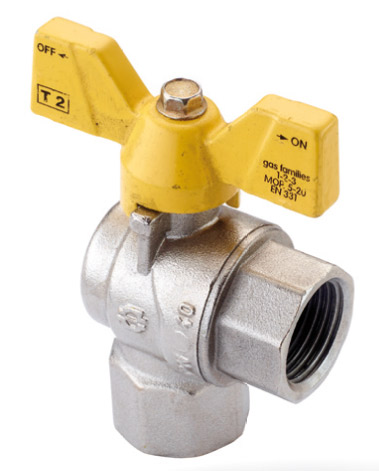Hydraulic ball valves: characteristics, materials and production
Hydraulic ball valves are the most common alternative that can be found within a plumbing system.
 Hydraulic ball valves represent the most common alternative that can be found within a plumbing system. The main element is constituted by the shutter which has a cylindrical hole: when the valve is open, the cylindrical section is arranged coaxially to the tube allowing the passage of the fluid (the hollow section of the shutter can be both of a smaller diameter and a diameter equal to that of the pipe on which it is installed, with different benefits and problems regarding pressure drops and valve cleaning); vice versa, when the valve is closed, the passage is blocked by the shutter and the fluid is unable to flow. The actuation of the valve is rapid, a rotation equal to a quarter of a turn is sufficient to guarantee opening or closing: this aspect represents both an advantage and a disadvantage for hydraulic ball valves, as it is easy to close the passage if necessary, but quick opening and closing can damage the component and the system, causing considerable damage both from a functional and economic point of view.
Hydraulic ball valves represent the most common alternative that can be found within a plumbing system. The main element is constituted by the shutter which has a cylindrical hole: when the valve is open, the cylindrical section is arranged coaxially to the tube allowing the passage of the fluid (the hollow section of the shutter can be both of a smaller diameter and a diameter equal to that of the pipe on which it is installed, with different benefits and problems regarding pressure drops and valve cleaning); vice versa, when the valve is closed, the passage is blocked by the shutter and the fluid is unable to flow. The actuation of the valve is rapid, a rotation equal to a quarter of a turn is sufficient to guarantee opening or closing: this aspect represents both an advantage and a disadvantage for hydraulic ball valves, as it is easy to close the passage if necessary, but quick opening and closing can damage the component and the system, causing considerable damage both from a functional and economic point of view.The materials of the hydraulic ball valves
Hydraulic ball valves, being a highly widespread component, are known components and the study has allowed them to be developed in various fields and materials. The most common materials are metallic materials: brass represent the state of the art for low pressures while, at high pressures, other metallic materials such as stainless steels may be more suitable. However, there are other possibilities regarding polymeric materials, such as PVC, PP and PVDF: these materials are valid alternatives if the fluids conducted are at room temperature or slightly above.Among the fundamental components for the correct functioning of the ball valves there are the seals: these elements are generally made of PTFE (commonly known as Teflon) which has chemical and thermal resistance and a low coefficient of friction, thus reducing this problem.
The production process of hydraulic ball valves
The geometry and the wide diffusion of this type of components makes them suitable for the forging process, as regards metallic materials. This process is an industrial production method of plastic deformation that allows the morphological modeling of the material after it has been brought to temperature (above the recrystallization temperature) through the use of a hammer or a press. For polymeric materials, injection molding is preferred, a rapid and suitable process that allows to combine both production rates and the creation of qualitatively efficient products.Furthermore, the installation, commissioning and maintenance phase of the component is not negligible: if these operations are not carried out optimally, all the phases carried out are nullified and the possibility of failures in operation increases, leading to both safety and security problems as concerning about the costs of the system.
The importance of hydraulic valves within a system
Hydraulic valves are a fundamental component of the systems in which water is conveyed. In fact, the roles that these types of devices can play are many and allow optimal functioning:- Flow interception: these are valves used either in the fully open position or in the fully closed position. Otherwise damage occurs which can lead to component failure. This category of valves includes ball valves;
- Flow regulation: they are complementary and antithetical to the previous ones. In fact, they can also be used in an intermediate position, guaranteeing flow regulation and allowing both flow and pressure to be managed;
- Retaining: they allow the flow only in one direction avoiding safety problems even of considerable entity;
- Safety: they allow the fluid to be released in case of overpressure conditions that are harmful to the system itself;
- Vent: by eliminating the air present in the pipes, they favor the efficiency of the system.
Based on these features, it is easy to understand the importance of choosing the correct valve for the purposes you want to achieve. The wrong choice or, in worst cases, insufficient maintenance lead to non negligible economic and structural damage which can also involve problems relating to the safety of persons.
21/06/2022
I contenuti di questo sito non hanno carattere di periodicità e non rappresentano 'prodotto editoriale'.








